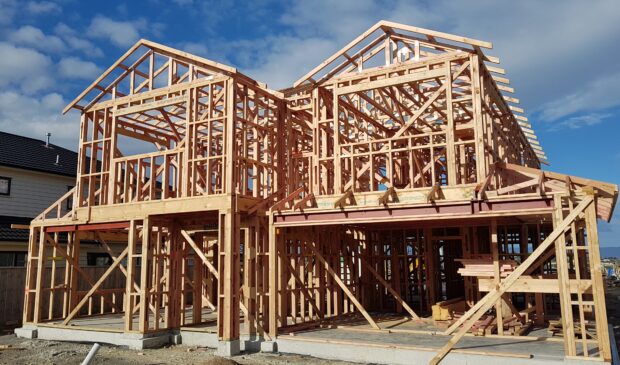Panelists offer cautious optimism on HOME and other city land use changes
Thursday, June 27, 2024 by
Chad Swiatecki Local real estate and development professionals weighed in Wednesday on the potential impact of the city’s many recent changes in land use policy, which were intended to add housing stock and address the affordability problem that has affected the area for roughly a decade.
At the monthly breakfast panel held by Urban Land Institute Austin, the discussion focused on the policy slate that sought to reduce minimum lot sizes and add more single-family units, reduce compatibility requirements for developments surrounding single-family homes and tailor equitable transit-oriented developments to maximize affordability and encourage use of mass transit. Panelists were supportive of City Council and staff’s work on those changes since late last year, with guarded optimism about how successful each policy initiative could be.
Josh Lickteig, principal with Endeavor development company, said high interest rates and other financial considerations have slowed down building projects in general. That slow pace of construction and sales volume will likely make builders more hesitant to begin new projects in areas where they previously weren’t allowed.
“We’re in capital markets where even your five-story wrap projects along the corridors don’t pencil (as feasible). This was a long-term vision for how do we grow density and how do we grow ridership, and then you combine that with the fact that one of the key tenets of people moving here for the last few decades has been its relative affordability to other markets,” he said. “As we get into a new capital market cycle, we’ll really get to see whether or not the calibration is such that developers like Endeavor will utilize the program.”
Lickteig said the changes in compatibility requirements haven’t drawn as much attention as they deserve because of the ability to create buildings of three stories or more far closer to residential areas than had been allowed previously.
“(Compatibility) has been a really restricting factor on our corridors for decades. … I think that will be the first thing that’s utilized,” he said.
Cody Carr, founding principal for Carr Residential, said his company has already created three new homes under the new guidelines, with more expected as the markets continue to adjust.
“The robust change that was presented by Council and staff is a lot more than I think we even expected. Now we’re going to be able to put houses on these lots that make a lot more sense. So we’ll be able to actually spread this square footage out on all these lots,” he said. “You’ll see rear houses, front houses. You might see front houses shrink, rear houses grow a little bit and become three/twos. You’ll see a much more just palatable environment for what we do in infill homebuilding.”
Carr was cautious about how significant the HOME 2 changes on minimum lot sizes could be, particularly related to the process of subdividing a parcel including multiple new single-family homes where only one had been allowed previously.
“You still have to go through the subdivision process. The large hurdle or the impediment there is that comparatively, the process in the city of Austin for subdivisions is arduous. It’s complex and it takes up to a year, year and a half. It costs $100,000 to $300,000 even for small projects,” he said.
“You compare that to a city like Houston, where that same process might take six weeks. … Without that calibration, HOME 2 is really going to struggle.”
Related to the ETOD considerations approved by Council recently, Annick Beaudet, mobility officer for Project Connect, said the planned density and access for potential transit riders helps to create “an insurance policy on our ridership projections” that is needed as federal funds are sought to further finance the mass transit plan.
“Austin light-rail is counting on 50 percent of the funding for phase one and the priority extensions that go north from 38th Street to Crestview to connect with the Red Line, and other options further north and then to the airport, which was really important to our stakeholders,” she said. “This work is relevant to Project Connect in that the grant application, the 50 percent that we’re counting on, which is upwards of about $2.5 billion, with a B, for the light-rail part of the program.”
The Austin Monitor’s work is made possible by donations from the community. Though our reporting covers donors from time to time, we are careful to keep business and editorial efforts separate while maintaining transparency. A complete list of donors is available here, and our code of ethics is explained here.
You're a community leader
And we’re honored you look to us for serious, in-depth news. You know a strong community needs local and dedicated watchdog reporting. We’re here for you and that won’t change. Now will you take the powerful next step and support our nonprofit news organization?







